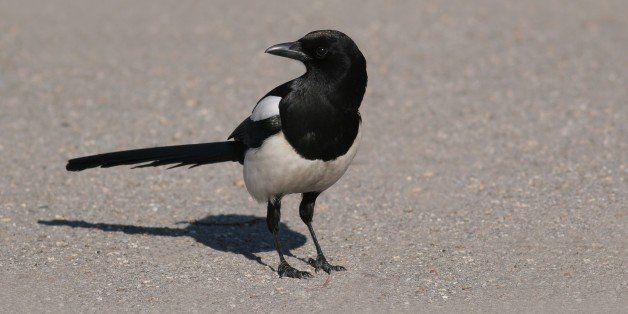
Humans may not be the only ones heeding posted speed limits. Birds apparently take this information into account to avoid being hit by oncoming traffic as they forage near roads.
On a drive home from the laboratory, researchers in Canada conducted a straightforward experiment: They traveled stretches of road with various speed limits (20, 50, 90, and 110 kilometers per hour) and tested how close a bird on or beside the road (like the magpie above) would allow the advancing car to come before fleeing its dangerous position—a measure called flight initiation distance.
As soon as the scientists saw a bird ahead of them fly away, they started a timer and recorded how long it took them to reach the spot where the bird had been.
They ran the experiment at different speeds—at, above, and below the legal limits. When they calculated the distance at which birds bailed for safer ground, they found that this distance was greater on roads with higher speed limits. However, the speed of the car itself had no effect on flight initiation distance.
It seems that the birds didn’t judge the speed of a specific oncoming vehicle, but instead associated each stretch of road with a degree of risk based on the speed limit and took extra precautions on faster roads, the researchers report online today in Biology Letters.
They suggest this measurement might improve future conservation efforts by showing how birds adapt to increasingly human-dominated environments.
See more ScienceShots.
ScienceNOW, the daily online news service of the journal Science
